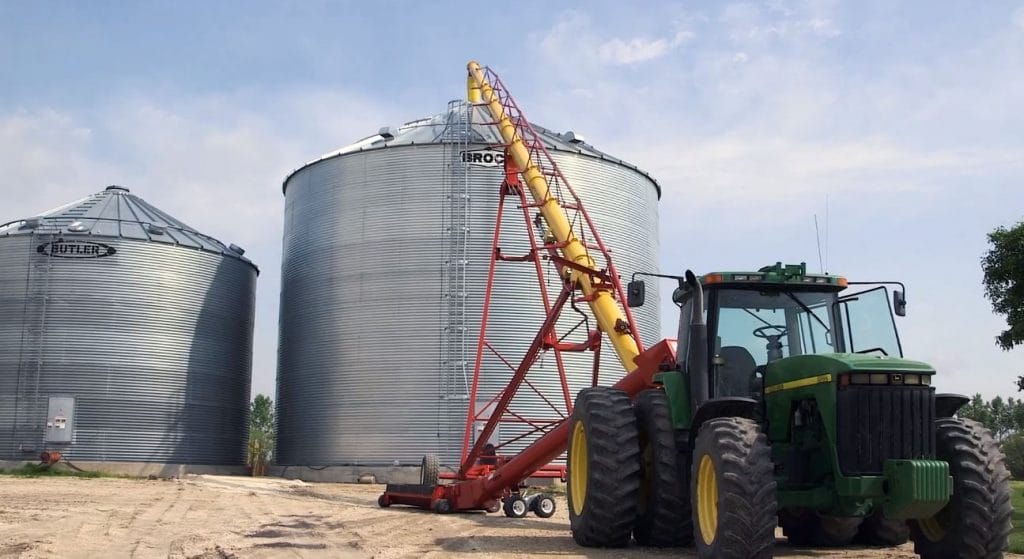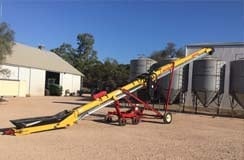Over the years, there’s been a noticeable trend in Australian grain farms consolidating and increasing in size and output.
In the past, the average sized farm could get away with using an 8 or 10-inch grain auger at harvest time and still get things done efficiently.
But harvesters are now much bigger. Capacity has increased across the board. B doubles are now used in the harvesting process rather than single semis and road trains.
While the rest of the processing chain has become more efficient, many farms which have scaled up are still relying on 8 or 10-inch augers. As a result, these farms are experiencing significant bottlenecks. Smaller augers just can’t keep up with the increase in capacity and pace of a modern harvest.
It’s all well and good to invest in a big harvester that can thresh up to 800 tonnes a day, but if your auger is flat out processing 70 - 80 tonnes an hour, you’re going to end up with a line of idling trucks, unable to quickly unload at your silos.
Every delay in the processing chain results in wasted time and increases in operational costs.
So your auger really is as important as your harvester. And there are significant benefits to investing in a larger auger, regardless if you own your own harvester or rely on contractors.
If you own your harvester…
A big capacity harvester can set you back $400K to $800K, which is a significant expense for any farm.
But a big capacity harvester needs a high capacity auger to keep your harvest running smoothly. Otherwise, you’ll end up burning money caused by bottlenecks.
When you consider that a high capacity grain auger will cost approximately 5% to 10% of the cost of your harvester, it certainly makes economical sense to invest in a piece of equipment that will be able to keep up with your harvester output.
If you hire a harvester…
When you pay for a harvester by the hour, time really is money. And a good contract harvester can be hard to find during busy harvest seasons.
Contractors want to get in, get it done, get out and move on to the next job.
If you’ve got a small auger which can’t load your silos quickly, you might find it hard to keep a good contractor on your books. They may not want to come back for another season if there are recurrent delays in your harvesting process.
Essentially, the more efficient your operation is, the happier everyone is.
Here’s a good rule of thumb for determining what size grain auger you need
Depending on your travel distance, your auger needs to be able to process at least 4 times as fast as your harvester. This will ensure you achieve a smooth and efficient operation.
Take the following comparison to use as a guideline in your thinking…
A 13-inch auger can shift up to 300 tonnes of wheat per hour (depending on moisture content). This will move mountains for the average sized Australian farm.
Whereas a big 16-inch auger can shift up to 600 tonnes of wheat per hour (depending on moisture content). So an auger of this size is much more suited for use on large farms and commercial operations.
Another thing to consider are the drive options for your auger
Even the most powerful petrol engine drive model can only reach around 38 HP. For high capacity augers, engine drive just won’t cut it.
For example, a 13-inch auger needs between 100 HP and 185 HP, depending on the length, to reach full capacity. Larger augers can easily achieve the required HP with the use of a tractor with Power Take Off (PTO).
Want to learn more about using using a high capacity auger to improve the efficiency of your harvest? Talk to the experts at Westfield Augers.
We’ve helped farmers all over Australia remove processing bottlenecks and reduce operating costs.
Simply click here to get in touch with our friendly team.







